Aigis PTZA6-2P23H Handleiding
Aigis
Bewakingscamera
PTZA6-2P23H
Bekijk gratis de handleiding van Aigis PTZA6-2P23H (12 pagina’s), behorend tot de categorie Bewakingscamera. Deze gids werd als nuttig beoordeeld door 53 mensen en kreeg gemiddeld 4.1 sterren uit 27 reviews. Heb je een vraag over Aigis PTZA6-2P23H of wil je andere gebruikers van dit product iets vragen? Stel een vraag
Pagina 1/12

Page 1
PTZA6 Series Pan
-
Tilt
-
Zoom
Domes
Installation Manual
Aigis Mechtronics, Inc.
1124 Louise Road, Winston-Salem, NC 27282
Ph (336)785-7740 Fax (336)785-7744
www.aigismech.com

Page 2
Table of Contents
1. Important Safeguards................................................... 3
1.1. Warnings............................................................. 3
1.2. Environmental Specifications............................... 3
1.3. Lightning-Proof Requirements............................. 3
1.4. Lightning and Surge Proofing............................... 4
1.5. Water Proofing.................................................... 4
2. Installation ................................................................... 4
2.1. Before You Start.................................................. 4
2.2. Materials Required.............................................. 4
3. Bracket Installation....................................................... 4
3.1. Overview............................................................. 4
3.2. Bracket Installation.............................................. 5
3.2.1. Wall Bracket Installation ................................. 5
3.2.2. Pendant Bracket Installation ........................... 5
3.2.3. Corner Bracket Installation.............................. 6
3.2.4. Pole Bracket Installation ................................. 7
3.3. Wiring and Installing the Dome Cover.................. 8
3.4. Pan/Tilt Module Installation ................................ 9
4. Recess Mount Installation........................................... 10
4.1. Ceiling Hole Preparation.................................... 10
4.2. PTZ Module Installation..................................... 12
4.3. Trim Ring and Dome Bubble Attachment........... 12
IMPORTANT SAFEGUARDS
1. Read Instructions - All the safety and operating instructions should be read before
the unit is operated.
2. Retain Instructions - The safety and operating instructions should be retained for
future reference.
3. Heed Warnings - All warnings on the unit and in the operating instructions should be
adhered to.
4. Follow Instructions - All operating and use instructions should be followed.
5. Cleaning - Unplug the unit from the outlet before cleaning. Do not use liquid
cleaners or aerosol cleaners. Use a damp cloth for cleaning.
6. Attachments - Do not use attachments not recommended by the product
manufacturer as they may cause hazards.
7. Accessories - Do not place this unit on an unstable stand, tripod, bracket, or mount.
The unit may fall, causing serious injury to a person and serious damage to the unit.
Use only with a stand, tripod, bracket, or mount recommended by the manufacturer
or sold with the product. Any mounting of the unit should follow the manufacturer's
instructions and should use a mounting accessory recommended by the
manufacturer.
An appliance and cart combination should be moved with care. Quick stops,
excessive force, and uneven surfaces may cause the appliance and cart
combination to overturn.
8. Ventilation - Openings in the enclosure, if any, are provided for ventilation, to ensure
reliable operation of the unit, and to protect it from overheating. These openings
must not be blocked or covered. This unit
should not be placed in a built-in installation unless proper ventilation is provided or the
manufacturer's instructions have been adhered to.
9. Power Sources - This unit should be operated only from the type of power source
indicated on the marking label. If you are not sure of the type of power supply you
plan to use, consult your appliance dealer or local power company. For units
intended to operate from battery power or other sources, refer to the operating
instructions.
10. Grounding or Polarization - This unit may be equipped with a polarized alternating-
current line plug (a plug having one blade wider than the other). This plug will fit into
the power outlet only one way. This is a safety feature. If you are unable to insert the
plug fully into the outlet, try reversing the plug. If the plug should still fail to fit,
contact your electrician to replace your obsolete outlet. Do not defeat the safety
purpose of the polarized plug. Alternatively, this unit may be equipped with a 3-wire
grounding-type plug, a plug having a third (grounding) pin. This plug will only fit into
a grounding-type power outlet. This is a safety feature. If you are unable to insert the
plug into the outlet, contact your electrician to replace your obsolete outlet. Do not
defeat the safety purpose of the grounding-type plug.
11. Power Cord Protection - Power supply cords should be routed so that they are not
likely to be walked on or pinched by items placed upon or against them, paying
particular attention to cords and plugs, convenience receptacles, and the point
where they exit from the appliance.
12. Power Lines - An outdoor system should not be located in the vicinity of overhead
power lines or other electric light or power circuits or where it can fall into such
power lines or circuits. When installing an outdoor system, extreme care should be
taken to keep from touching such power lines or circuits as contact with them might
be fatal. U.S.A. models only - refer to the National Electrical Code Article 820
regarding installation of CATV systems.
13. Overloading - Do not overload outlets and extension cords as this can result in a fire
or electric shock.
14. Object and Liquid Entry - Never push objects of any kind into this unit through
openings, as they may touch dangerous voltage points or short out parts that could
result in a fire or electric shock. Never spill liquid of any kind on the unit.
15. Servicing - Do not attempt to service this unit yourself as opening or removing covers
may expose you to dangerous voltage or other hazards. Refer all servicing to
qualified service personnel.
16. Damage Requiring Service - Unplug the unit from the outlet and refer servicing to
qualified service personnel under the following conditions:
a. When the power supply cord or plug is damaged.
b. If liquid has been spilled or objects have fallen into the unit.
c. If the unit has been exposed to rain or water.
d. If the unit does not operate normally by following the operating instructions. Adjust
only those controls that are covered by the operating instructions, as an improper
adjustment of other controls may result in damage and will often require extensive
work by a qualified technician to restore the unit to its normal operation.
e. If the unit has been dropped or the cabinet has been damaged.
f. When the unit exhibits a distinct change in performance--this indicates a need for
service.
17. Replacement Parts - When replacement parts are required, be sure the service
technician has used replacement parts specified by the manufacturer or have the
same characteristics as the original part. Unauthorized substitutions may result in fire,
electric shock, or other hazards.
18. Safety Check - Upon completion of any service or repairs to this unit, ask the service
technician to perform safety checks to determine that the unit is in proper operating
condition.
19. Coax Grounding - If an outside cable system is connected to the unit, be sure the
cable system is grounded. U.S.A. models only--Section 810 of the National Electrical
Code, ANSI/NFPA No.70-1981, provides information with respect to proper grounding
of the mount and supporting structure, grounding of the coax to a discharge unit,
size of grounding conductors, location of discharge unit,connection to grounding
electrodes, and requirements for the grounding electrode.
20. Lightning - For added protection of this unit during a lightning storm, or when it is left
unattended and unused for long periods of time, unplug it from the wall outlet and
disconnect the cable system. This will prevent damage to the unit due to lightning
and power line surges.
CAUTION: TO REDUCE THE RISK OF ELECTRICAL
SHOCK, DO NOT OPEN COVERS. NO USER
SERVICEABLE PARTS ARE INSIDE. REFER SERVICE
TO QUALIFIED SERVICE PERSONNEL.

Page 3
1. Important Safeguards
1.1. Warnings
• Read this manual fully before attempting installation.
• Do not install this product near flammable or explosive
materials.
• Installation must be performed by qualified service
personnel in accordance with the national and local safety
codes.
• Ensure any lift equipment used employs proper safety
features.
• Cut off power to the unit before servicing.
• Do not exceed 30VAC on 24 volt models. Operation
above 30VAC violates low voltage operation (Class 2)
specifications. Normal operation is 24VAC.
• Be careful not to drop the camera module or camera
housing during installation.
• Do not install this dome in any environment exceeding
the environmental conditions described below.
1.2. Environmental Specifications
Indoor Domes:
Operating Temperature:
-10° ~ +50° C
(+14° ~ 122° F)
Humidity:
Non-condensing
< 95% R.H.
Air Pressure
0.86 ~ 1.06 bar
Power Supply (included)
24VAC, 50/60 Hz
1.0 Amps
Outdoor Domes:
Operating Temperature
-40° ~ +60° C
(-40° ~ +140° F)
Humidity:
Non-condensing
< 95% R.H.
Air Pressure
0.86 ~ 1.06 bar
Power Supply (included)
24VAC, 50/60 Hz
2.5 Amps
1.3. Lightning-Proof Requirements
Refer to Figure 1 throughout this section.
• Maintain a minimum of 50 meter (164 feet) distance from
any high voltage cables or equipment.
• Run outdoor rated cable under building eaves if possible.
• Run cabling to the site in buried, sealed steel tubes
(conduit). In areas exposed to the elements, shield the
cables with steel conduit. Connect the conduit to ground
at a single point; connect the ground to a Bus.
• In strong thunderstorm or high faradic zones (such as high
voltage transformer substations), extra strong lightning
proof equipment and a lightning rod must be employed.
• Take the building lightning proof requirements into
account to design the lightning proof and grounding
system of outdoor equipment and cable. Ensure that the
system is in accordance with national and industrial
standards.
• The system must be grounded with equal potentials. The
earth ground connection must satisfy the anti-
interference and electrical safety requirements and must
not short circuit eith the high voltage electricity net.
When the system is grounded separately, the resistance
of the ground conductor should be <4Ω and the cross-
sectional area of the ground conductor should be
<25mm2.
Power cable lightning conductor
Communication/Data cable lightning conductor
Video cable lightening conductor
45°
The dome must be installed
within the angle of 45 degree
under the lightening rod.
Ground wire resistance
shold be less than 4
Ω
Sealed Steel Tube
(conduit)
Figure 1
–
Typical Outdoor Installation
Product specificaties
| Merk: | Aigis |
| Categorie: | Bewakingscamera |
| Model: | PTZA6-2P23H |
Heb je hulp nodig?
Als je hulp nodig hebt met Aigis PTZA6-2P23H stel dan hieronder een vraag en andere gebruikers zullen je antwoorden
Handleiding Bewakingscamera Aigis

7 Juli 2023

6 Juli 2023

6 Juli 2023

5 Juli 2023

5 Juli 2023

5 Juli 2023

4 Juli 2023

4 Juli 2023

3 Juli 2023

2 Juli 2023
Handleiding Bewakingscamera
- DataVideo
- Oplink
- Digital Watchdog
- Broan
- Setti+
- EFB Elektronik
- Vivotek
- Mach Power
- Flamingo
- Synology
- Steren
- Pelco
- Sentry360
- Hamlet
- Withings
Nieuwste handleidingen voor Bewakingscamera
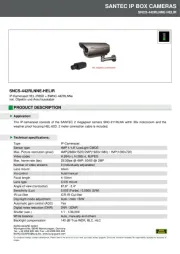
3 Augustus 2025
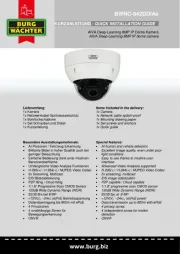
3 Augustus 2025
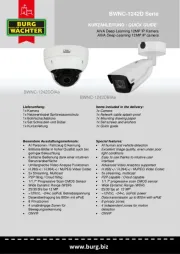
3 Augustus 2025
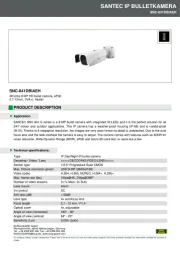
2 Augustus 2025
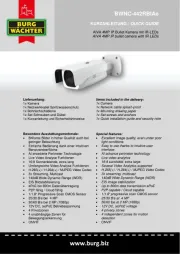
2 Augustus 2025
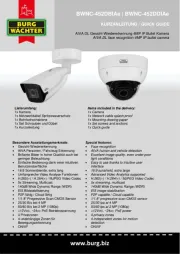
2 Augustus 2025
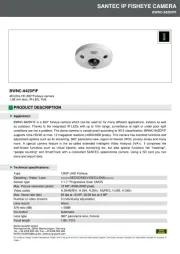
2 Augustus 2025
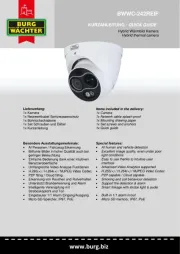
2 Augustus 2025
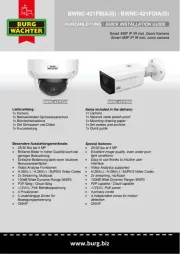
2 Augustus 2025
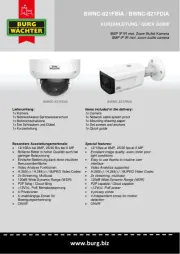
2 Augustus 2025